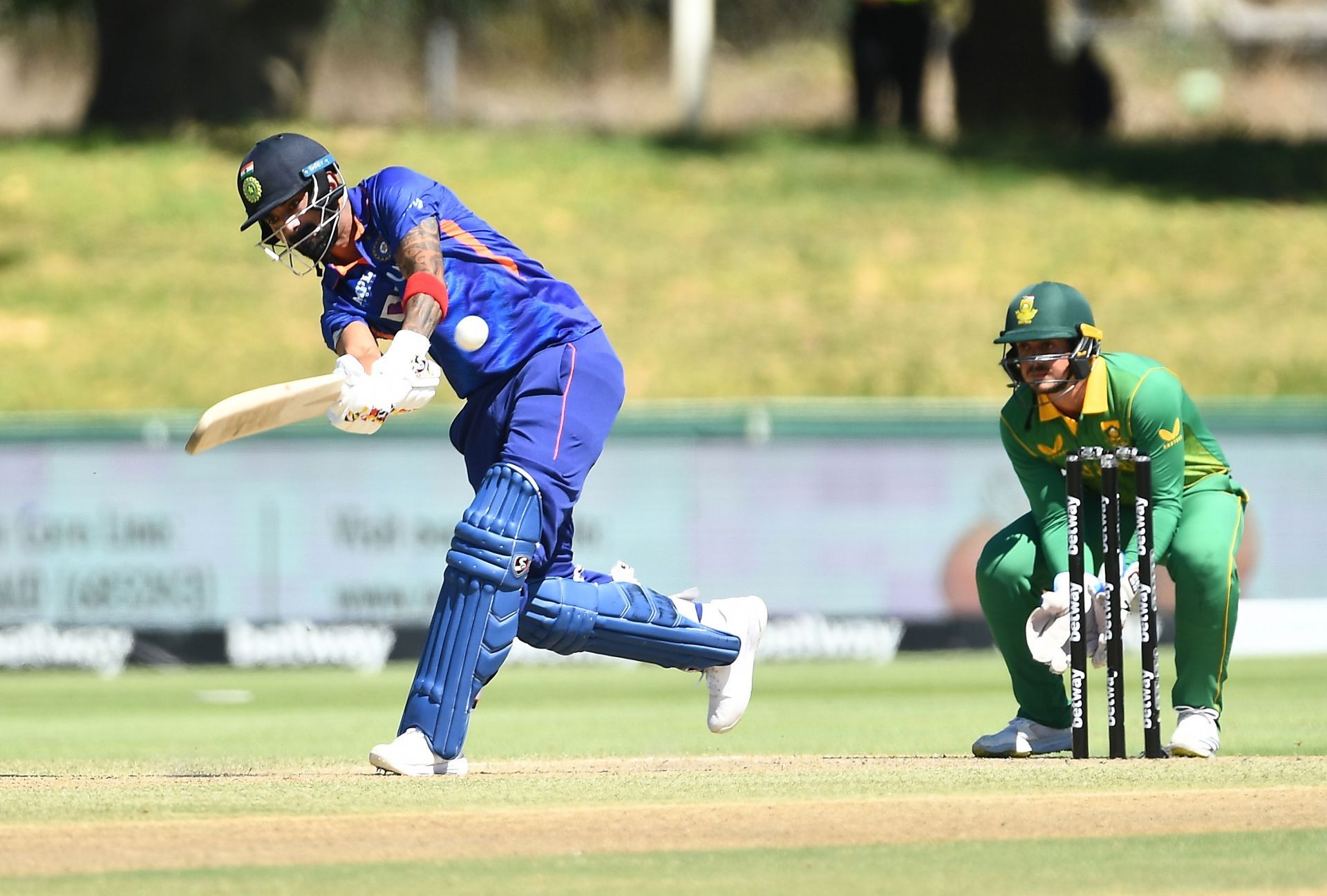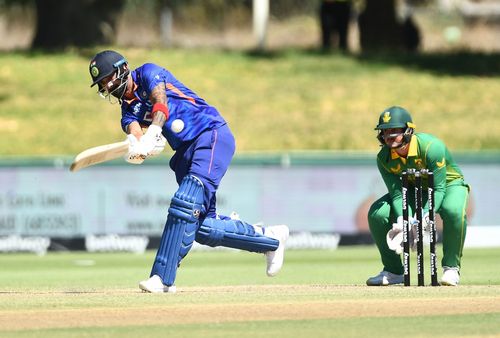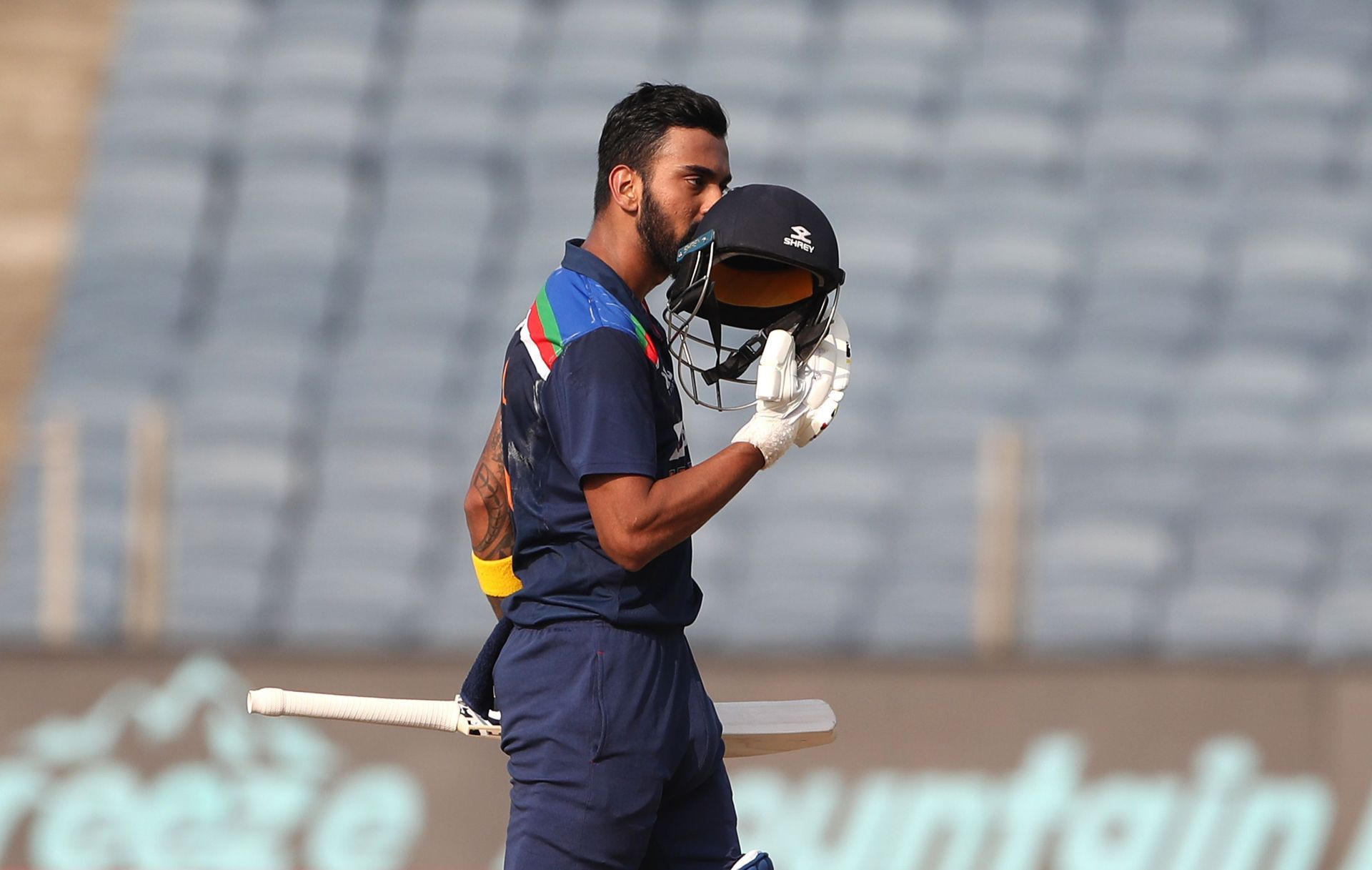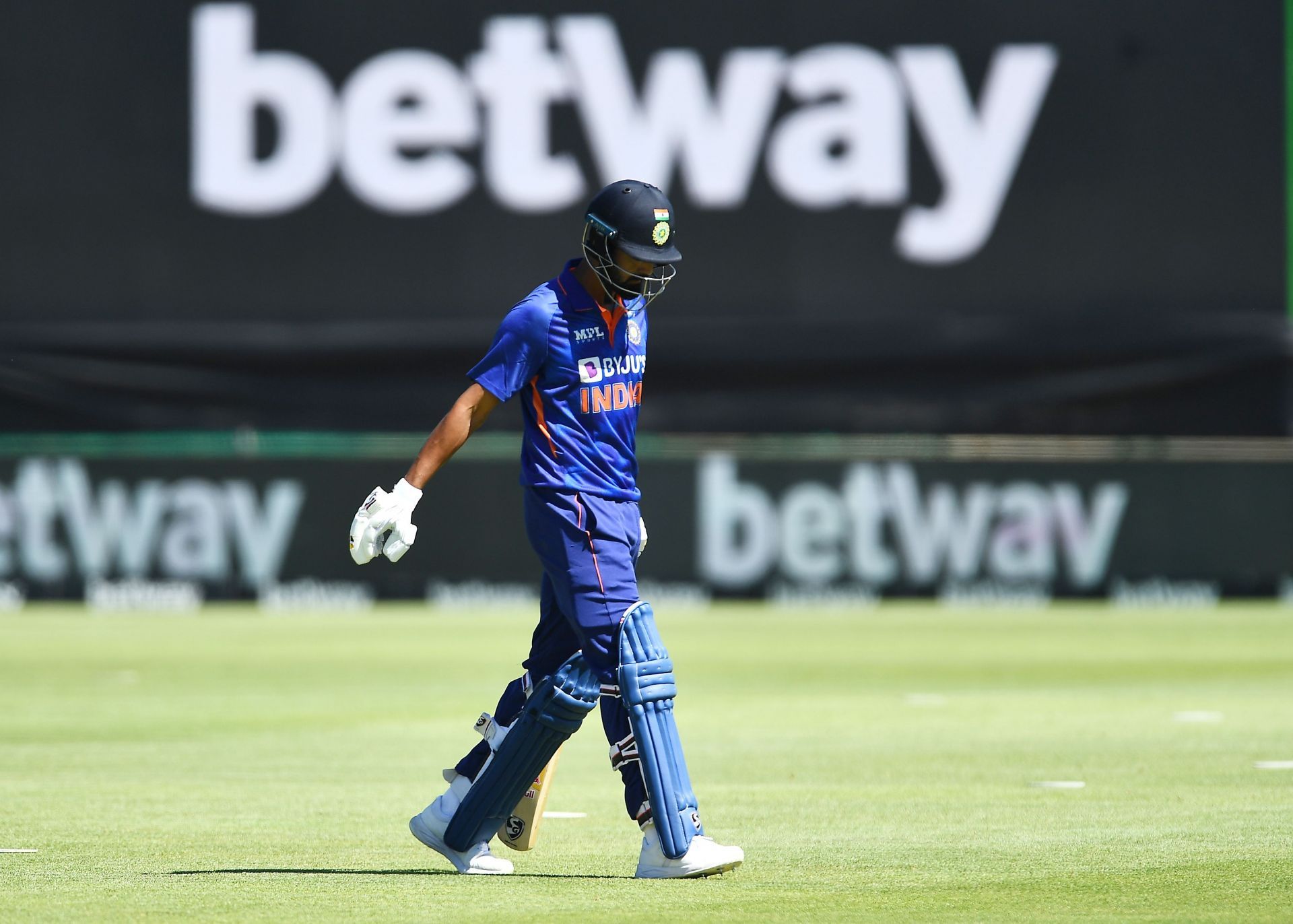
3 reasons why KL Rahul should bat at No.5 in ODIs

KL Rahul led India for the first time in an ODI in their first match against South Africa. Unfortunately for him, the hosts beat India by 31 runs to take a 1-0 lead in the three-match series.
Rahul is captaining India in the series due to the absence of Rohit Sharma. This was supposed to be Rohit's first assignment as India's full-time ODI captain, but a hamstring injury ruled him out and forced Rahul, — who has been named vice-captain in shorter formats to fill in for him.
Rahul, who has recently batted down the order at No.5 for India in ODIs, also filled in for Rohit in the opening slot, partnering Shikhar Dhawan, with Shreyas Iyer playing at three down, coming after Rishabh Pant.
India had to chase a target of 297 runs, courtesy of the centuries scored by Rassie van der Dussen and Temba Bavuma. India's chase fell apart after a 92-run stand between Dhawan and Virat Kohli, bringing the middle order under scrutiny.
Rahul himself got off to a watchful start, but failed to make a significant score as he got dismissed by Aiden Markram in the ninth over for 12 off 17.
With a young opener like Ruturaj Gaikwad, (who was in hot form in the Vijay Hazare Trophy) also in the squad, there are doubts whether India would be better served with Rahul playing in the middle order, where he has settled well and put in some great performances.
Here are 3 reasons why KL Rahul should persist at No.5 for India in ODIs:
#1 The numbers speak for themselves

In 39 ODIs, KL Rahul scored 1521 runs at an average of 47.53 and strike rate of 89.10.
Nineteen of these matches saw him play as an opener. At the top of the order, he scored 820 runs at 48.24. His strike rate, however, dropped to 81.35 whenever he opened the batting.
In contrast, he has played 10 matches at No.5, taking to the role as fish would to water, and scoring 453 runs at 56.63. Not only does he average significantly higher coming in at three down, but also boasts of a strike rate of 113.82.
He has played some blinders at the position against Australia, New Zealand and England, showing he can shine there against the best of oppositions.
While as an opener, he can be slightly tentative at times, he looks assured at No.5.His ability to seamlessly switch gears means he can steady the team and play a long knock if wickets fall early, or go all guns blazing if he comes to the crease later in the innings when the team would need a strong finish.
#2 Clarity of role
With the next ODI World Cup set to be held at home in 2023, it is imperative for India to go into the tournament with a team where the players know their roles.
In 2019, India failed to lock in on a No.4 and that eventually led to an unsettled team that crashed out in the semi-finals.
Once Rohit Sharma returns to the fold, he is expected to open with Shikhar Dhawan with KL Rahul moving back to No.5. If that is the case, it would make more sense to ensure that he continues playing in that position, without any confusion as to his role in the team.
When India has an option like Ruturaj Gaikwad, who has shown he can take on top class bowlers in the Indian Premier League (IPL), they can easily open with him and have Rahul continue to play in the middle order.
Doing so also allows them to develop more backups for the opening position without moving another key player from their spot in the team.
#3 Protection against collapse

There is no doubt that KL Rahul is among India's most talented batters and he is also among those players in the team with the most amount of international experience.
If all players are fit, India will have their three prime ODI batters at the top of the order in Rohit Sharma, Shikhar Dhawan and Virat Kohli.
What has often happened with India, in big matches especially, is that they have faced top-order collapses that they never managed to recover from.
But with Rahul at No.5, it would boost their chances of coming back strong even if the top three get out quickly. In yesterday's match, for example, Kohli and Dhawan put on a 92-stand, but after the two fell in quick succession, the team could not recover.
A player like Rahul anchoring a top-order collapse would also allow players like Rishabh Pant or Hardik Pandya to accelerate around him with more freedom.